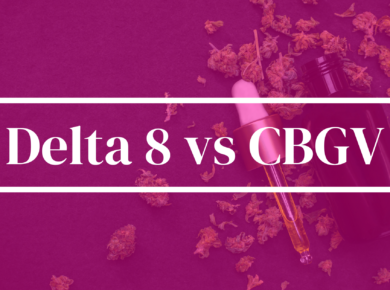CBL (Cannabicyclol) and CBC (Cannabichromene) are both non-psychoactive cannabinoids present in the cannabis plant, including hemp. Their key distinction revolves around their chemical compositions and their interactions with the human endocannabinoid system.
CBL, often simply recognized as a degradation product, emerges when components like CBC undergo exposure to light or heat over time. Given its limited presence in most cannabis strains, it hasn’t been as extensively explored as other compounds.
On the flip side, CBC stands out as one of the most abundant cannabinoids in cannabis. Stemming from the same precursor as CBD and THC, known as cannabigerolic acid (CBGA), CBC is notable for its engagement with several body receptors. Yet, unlike THC, its bond with CB1 receptors in the brain isn’t strong, ensuring it doesn’t trigger psychoactive effects.
Diving deeper into their molecular makeup, CBL and CBC, despite being vital components of the cannabis plant, differ in their chemical structures, formation processes, and modes of interaction with the endocannabinoid system. Nevertheless, comprehensive research is imperative to wholly grasp their prospective applications and influences.
Many States allow hemp derived cannabinoids under the 2018 Farm Bill as long as they contain less than .3% D9 THC. Some States have explicitly banned cannabinoids like Delta 8, so check your local rules and regulation before purchasing.
Here’s the rules for Kush.com and more details
Frequently Asked Questions (FAQs) What is CBL and its Relationship with Hemp? CBL is a non-psychoactive compound present in the hemp plant. It evolves from the degradation of cannabichromene (CBC). Though not as extensively researched as other cannabinoids, it forms part of hemp’s distinct chemical landscape.
How Does CBC Fit into the Hemp Picture? CBC is another non-psychoactive cannabinoid inherent to the hemp plant. It’s among the earliest cannabinoids to be synthesized by hemp, and like CBL, it enriches hemp’s overall chemical profile.
Do CBL and CBC Concentrations Vary in Hemp? The levels of CBL and CBC in hemp can differ based on the specific hemp strain, its growth environment, and harvest time. Generally, younger plants boast more CBC, while CBL concentrations amplify as hemp matures.
Extraction Methods for CBL and CBC from Hemp: What Are They? Both CBL and CBC can be isolated from hemp using diverse techniques, notably CO2 extraction and ethanol extraction. These methods ensure the cannabinoids remain intact.
Potential Applications for CBL and CBC: What Do Studies Indicate? Though making medical claims is off the table, both CBL and CBC are under the scientific lens for potential applications. Some studies delve into their probable interactions with the endocannabinoid system, but rigorous research is crucial for a holistic understanding.
Shop
Similar Product Searches You Might Be Interested In:




